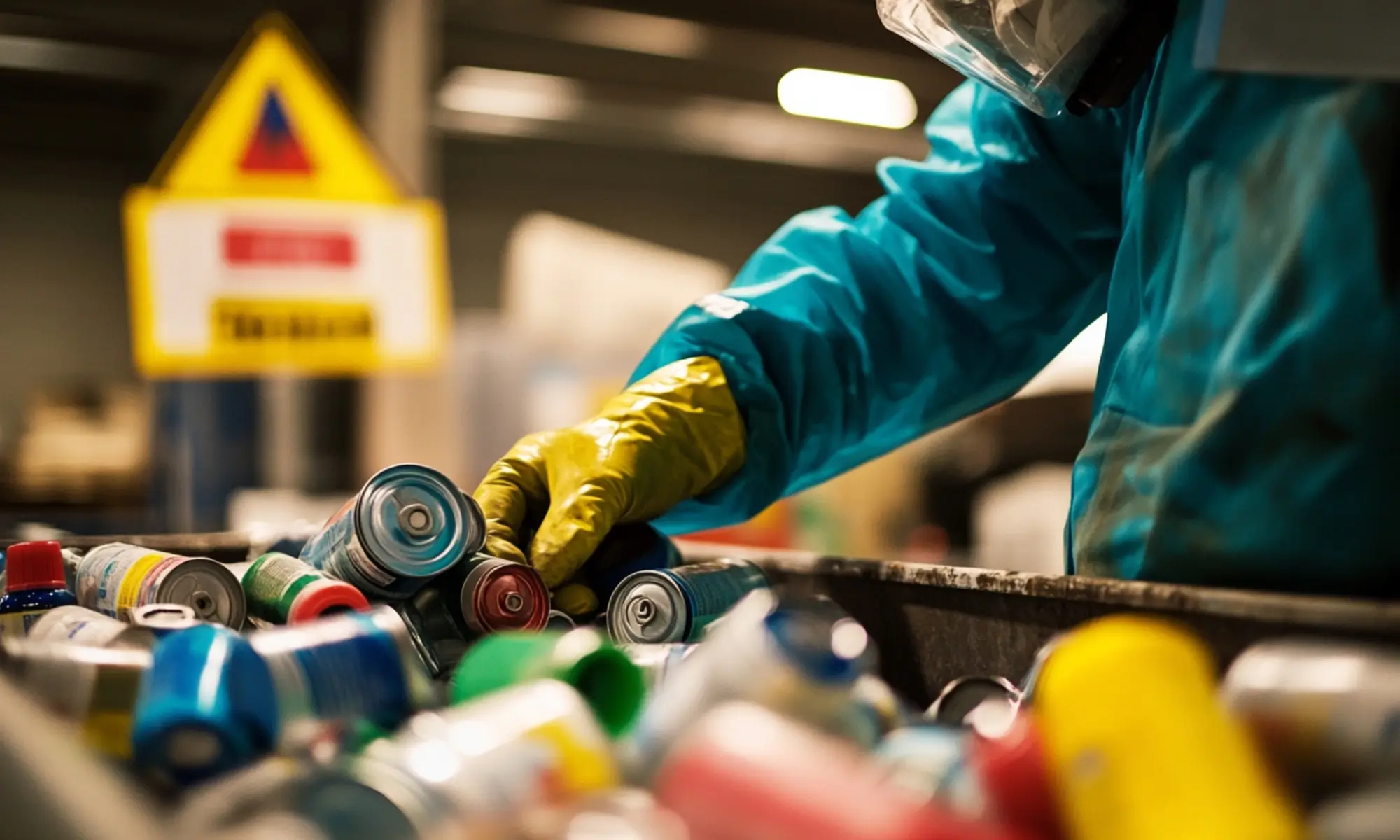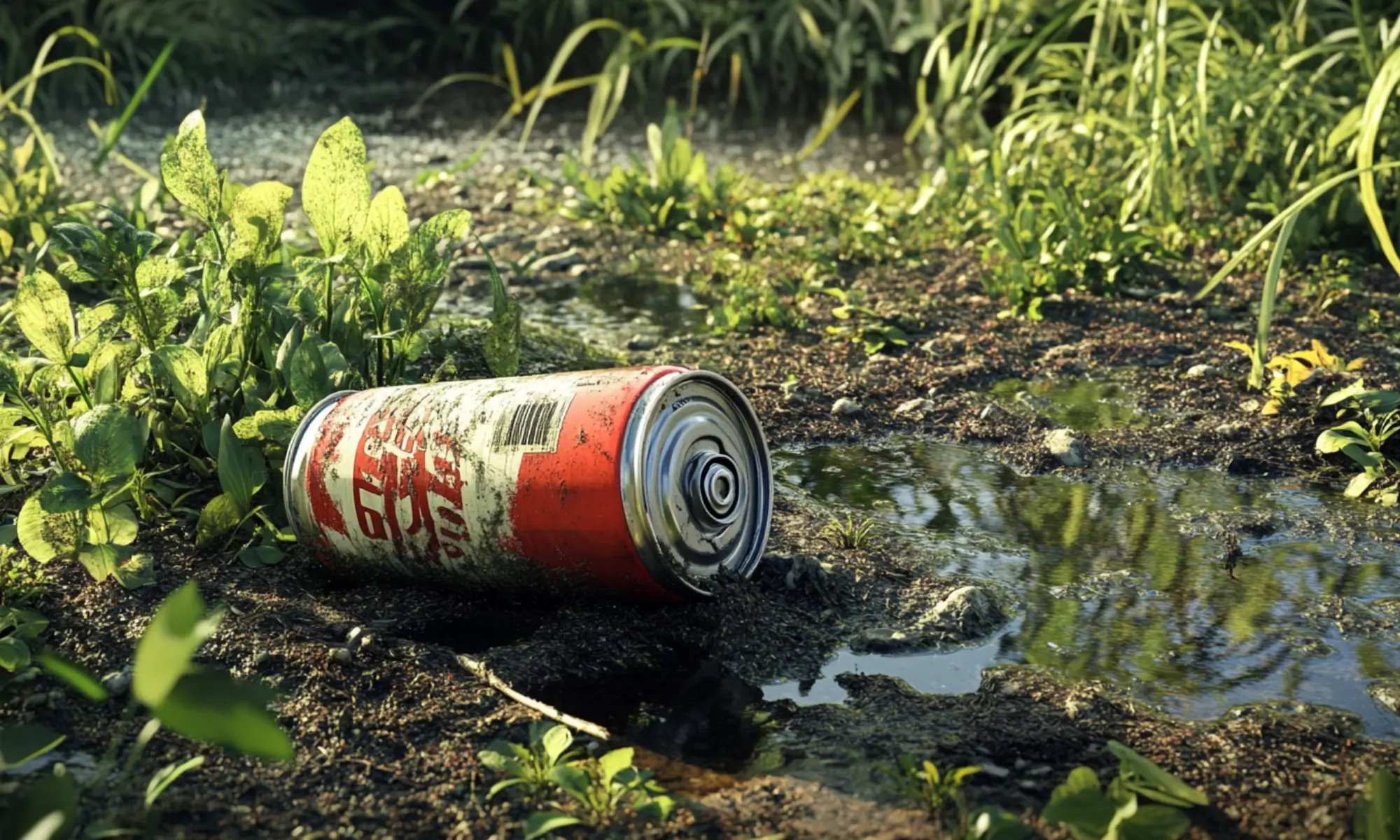Aerosol cans are an integral part of modern life, found in everything from cleaning supplies to personal care products. While their convenience and efficiency make them popular, improper disposal poses significant environmental and safety risks. Understanding aerosol cans, the types available, and the reasons for proper disposal is essential for responsible use.
This guide provides an in-depth look at aerosol cans, explores their environmental impact, and offers practical steps for safe disposal. Additionally, we discuss eco-friendly alternatives to aerosol products, empowering you to make choices that benefit both your household and the planet.

What Are Aerosol Cans?
An aerosol can is a self-contained dispensing system that stores a substance—such as paint, deodorant, or insecticide—along with a propellant under pressure. When the valve is opened, the propellant forces the product out in a fine spray, foam, or stream. The design ensures a consistent application and protects the contents from contamination.
Key Components:
- Canister: Typically made of metal (steel or aluminum) to withstand internal pressure.
- Product: The active substance intended for use.
- Propellant: A gas that pushes the product out when the valve is opened.
- Valve and Actuator: The mechanism that releases the product when pressed.

Types of Aerosol Cans
Aerosol cans can be classified based on various factors such as their contents, propellant type, material, and usage. Below are the main categories:
1. Based on Contents
Aerosol cans are often categorized by the type of product they contain. This classification helps users understand the variety of applications and the specific handling or disposal considerations for each type.
a. Personal Care Products
- Deodorants and Antiperspirants: Provide a convenient way to apply fragrances or sweat-blocking agents.
- Hair Sprays: Deliver a fine mist to hold hairstyles in place.
- Shaving Creams: Dispense foam for shaving.
b. Household Products
- Cleaning Agents: Include furniture polish and air fresheners.
- Pesticides: Used for insect control.
- Lubricants: Such as WD-40 for loosening rusty parts.
c. Industrial Products
- Spray Paints: For both consumer and professional use.
- Adhesives: Used in construction and crafting.
d. Food Products
- Cooking Sprays: Non-stick sprays for baking and cooking.
- Whipped Cream: Dispensed as foam for desserts.
e. Medical Products
- Inhalers: Deliver medication directly to the lungs.
- Disinfectants: For medical equipment and surfaces.
2. Based on the Propellant Type
The type of propellant used in aerosol cans affects their performance, safety, and environmental impact. Understanding these differences can help you select and dispose of the right product properly.
a. Compressed Gas Propellants
- Nitrogen or Air: Used in products where a simple mechanical force is needed.
- Advantages: Environmentally friendly and less flammable.
b. Liquefied Gas Propellants
- Hydrocarbons: Such as propane, butane, or isobutane.
- Hydrofluorocarbons (HFCs): Used in specific applications.
- Advantages: Consistent pressure and spray pattern.
3. Based on Can Material
The material of the aerosol can influence its durability, recyclability, and suitability for certain products. It also affects how the can should be disposed of after use.
a. Steel Cans
- Durable and Recyclable: Commonly used for a variety of products.
- Magnetic Properties: Easier to separate during recycling.
b. Aluminum Cans
- Lightweight and Corrosion-Resistant: Ideal for personal care products.
- Non-Magnetic: Requires different recycling processes.
4. Based on the Dispensing Mechanism
The dispensing mechanism determines how the product is released from the aerosol can, affecting its application and efficiency. Different mechanisms are designed to meet various user needs, from continuous sprays to precise, metered doses.
a. Continuous Spray
- Function: Provides an uninterrupted stream as long as the actuator is pressed.
- Uses: Hair sprays, deodorants, and cooking oils.
b. Metered Dose
- Function: Delivers a specific amount per activation.
- Uses: Medical inhalers and air fresheners.
Aerosol cans are versatile tools designed to deliver products efficiently and hygienically. By understanding the types and their specific uses, consumers can make informed choices and dispose of them responsibly, minimizing environmental impact.

Why Proper Disposal of Aerosol Cans Matters
Proper disposal of aerosol cans is crucial due to the potential risks they pose to the environment, human health, and safety. Aerosol cans are pressurized containers that may contain hazardous chemicals, and mishandling them can lead to environmental pollution, accidents and legal issues. Understanding the importance of correct disposal helps prevent these negative outcomes.
Environmental Protection
Incorrect disposal can result in harmful chemicals leaking into the environment, contaminating soil and water sources, and affecting wildlife.
- Prevents soil and water contamination by hazardous substances.
- Reduces air pollution from the release of volatile organic compounds (VOCs).
- Protects ecosystems and wildlife from toxic exposure.
- Supports sustainability and environmental conservation efforts.
Safety Considerations
Improperly discarded aerosol cans can explode or catch fire, posing serious safety hazards to individuals and property.
- Minimizes the risk of explosions or fires due to pressurized contents.
- Protects sanitation and waste management workers from potential injuries.
- Prevents accidents during waste collection and processing.
- Ensures safe handling and reduces emergency incidents.
Legal Compliance
There are laws and regulations governing the disposal of hazardous materials, including aerosol cans, and non-compliance can lead to penalties.
- Avoids fines and legal repercussions for improper disposal.
- Ensures adherence to local, state, and federal waste disposal regulations.
- Demonstrates corporate or personal responsibility and due diligence.
- Contributes to community health and safety standards.
Health Implications
If not disposed of properly, exposure to the chemicals in aerosol cans can lead to health issues for humans and animals.
- Reduces the risk of respiratory problems from inhaling toxic fumes.
- Prevents skin and eye irritation caused by chemical exposure.
- Minimizes the spread of contaminants that can affect public health.
- Protects waste handlers and the general public from hazardous substances.
Economic Benefits
Proper disposal can save costs by reducing environmental cleanup expenses and supporting recycling efforts.
- Lowers costs associated with environmental remediation and pollution control.
- Reduces waste management expenses through efficient disposal practices.
- Supports recycling industries by reclaiming materials like steel and aluminum.
- Promotes sustainable economic growth by conserving natural resources.
Properly disposing of aerosol cans plays a vital role in protecting the environment, ensuring safety, complying with laws, safeguarding health, and contributing to economic efficiency. Responsible disposal is a simple yet impactful action toward a healthier, safer community.

Step-by-Step Guide to Disposing of Aerosol Cans
Proper disposal of aerosol cans is essential to prevent environmental pollution, safety hazards, and legal issues. Aerosol cans contain pressurized contents that can be harmful if not handled correctly. The following step-by-step guide will help you dispose of aerosol cans safely and responsibly.
1. Check the Can’s Contents
Before disposing of an aerosol can, determine whether it is empty, partially full, or full. This assessment is crucial because the disposal method varies based on the can’s contents. An empty can is less hazardous and can often be recycled, while cans with remaining contents require special handling.
- Shake the can to listen for any remaining liquid or propellant.
- Press the nozzle to see if any product is discharged.
- Read the label for manufacturer instructions on disposal.
- Determine the can’s status: empty, partially full, or full.
2. Dispose of Empty Cans
Empty aerosol cans are generally considered non-hazardous and can be recycled or thrown away with regular household trash, depending on local regulations. Recycling is the preferred option as it conserves resources and reduces environmental impact.
- Verify the can is completely empty before disposal.
- Check local recycling guidelines to see if aerosol cans are accepted.
- Place empty cans in the designated recycling bin if applicable.
- If recycling isn’t available, dispose of the can with regular trash.
3. Handle Partially Full or Full Cans Carefully
Cans that are not entirely empty contain pressurized contents and potentially hazardous chemicals. These cans should not be discarded with regular trash or recycling but taken to appropriate hazardous waste facilities.
- Do not puncture or incinerate the can, as it may explode.
- Locate a hazardous waste disposal facility in your area.
- Transport cans carefully, avoiding heat and physical damage.
- Participate in community hazardous waste collection events if available.
4. Follow Safety Precautions
Safety should be a priority when handling aerosol cans for disposal. Taking proper precautions protects you and others from potential harm caused by the can’s contents or pressure.
- Wear protective gear like gloves and safety glasses if necessary.
- Store cans in a cool, dry place away from heat sources until disposal.
- Keep cans out of reach of children and pets.
- Follow all manufacturer instructions regarding disposal.
5. Consider Environmental Impact
Proper disposal helps prevent environmental contamination and conserves resources. Recycling materials like steel and aluminum from aerosol cans reduces the need for raw materials and energy consumption.
- Prevent chemicals from leaching into soil and waterways.
- Reduce air pollution by preventing the release of harmful propellants.
- Support recycling efforts to conserve natural resources.
- Minimize your carbon footprint through responsible disposal.
6. Check Legal Regulations
Disposal laws for aerosol cans can vary by location. Awareness of and complying with these regulations ensures you avoid legal penalties and contribute to community safety.
- Research local laws and regulations on aerosol can disposal.
- Contact your local waste management authority for guidance.
- Ensure compliance to avoid fines or legal issues.
- Stay updated on any changes in disposal regulations.
7. Explore Alternatives
Reducing the use of aerosol cans lessens the need for disposal and minimizes environmental impact. Consider using alternative products that are more environmentally friendly.
- Opt for pump sprays or non-aerosol alternatives when available.
- Use refillable or reusable containers for certain products.
- Choose eco-friendly brands committed to sustainable packaging.
- Reduce waste generation by buying only what you need.
8. Educate Others
Sharing knowledge about proper disposal methods amplifies the positive effects on the environment and community health. Encouraging others to follow suit creates a collective effort toward sustainability.
- Inform friends and family about safe disposal practices.
- Promote responsible waste management in your community.
- Participate in educational programs or local workshops.
- Lead by example to inspire others to act responsibly.
By following these steps, you ensure that aerosol cans are disposed of safely and responsibly, protecting both the environment and public health. Proper disposal is a simple yet significant action contributing to a cleaner and safer community.

Alternatives to Aerosol Products
Switching to alternatives for aerosol products can significantly reduce environmental impact and promote healthier living. Many aerosol products contain harmful chemicals and propellants contributing to air pollution and ozone depletion. By opting for non-aerosol alternatives, you can minimize these negative effects while still meeting your needs.
Environmentally Friendly Options
Consider using products that offer similar functionality without harmful environmental consequences.
- Pump Sprays: Use mechanical action to dispense liquids without propellants.
- Roll-on and Stick Applicators: Ideal for personal care items like deodorants.
- Trigger Sprays: These are commonly used for cleaning products and providing controlled application.
- Bulk Products and Refillables: Reduce packaging waste by refilling reusable containers.
Benefits of Alternatives
Switching to non-aerosol products offers several advantages.
- Reduced Environmental Impact: Lowers the release of volatile organic compounds (VOCs) and greenhouse gases.
- Enhanced Safety: Eliminates risks associated with pressurized cans, such as explosions.
- Cost Savings: Refillable options can be more economical over time.
- Healthier Indoor Air Quality: Decreases the presence of harmful chemicals in your home.
Choosing Sustainable Brands
Supporting companies that prioritize sustainability encourages eco-friendly practices.
- Eco-Friendly Certifications: Look for products with certifications like EcoLogo or Green Seal.
- Natural Ingredients: Opt for products made with biodegradable and non-toxic ingredients.
- Minimal Packaging: Select items with recyclable or reduced packaging materials.
DIY Solutions
Creating your own products can be a cost-effective and environmentally friendly alternative.
- Homemade Cleaners: Use common household ingredients like vinegar and baking soda.
- Natural Air Fresheners: Employ essential oils and diffusers instead of aerosol sprays.
- Personal Care Products: Make DIY deodorants and lotions with natural components.
Choosing alternatives to aerosol products contributes to environmental conservation and reduces potential health risks. Small changes in purchasing decisions can have significant positive impacts on the planet.
Conclusion
Conclusion
Proper disposal of aerosol cans is essential for protecting the environment and personal safety. By understanding aerosol cans and recognizing the available types, we become better equipped to handle them responsibly. Improper disposal can lead to environmental pollution, health hazards, and safety risks, but following a straightforward step-by-step guide can mitigate these dangers.
Additionally, considering alternatives to aerosol products reduces potential harm and promotes a more sustainable lifestyle. Every responsible action counts, and by disposing of aerosol cans safely and exploring eco-friendly options, we contribute to a healthier planet for ourselves and future generations.

